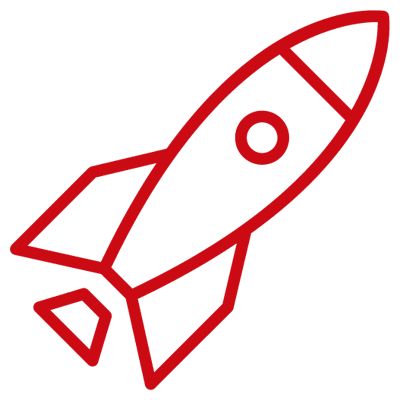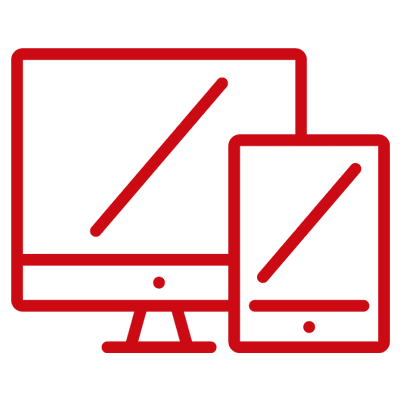In digital marketing, a landing page is a standalone web page, created specifically for a marketing or advertising campaign. It’s where a visitor “lands” after they click on a link in an email, or ads from Google, Bing, YouTube, Facebook, Instagram, Twitter, or similar places on the web.
Unlike web pages, which typically have many goals and encourage exploration, landing pages are designed with a single focus or goal, known as a call to action (or CTA, for short).
It’s this focus that makes landing pages the best option for increasing the conversion rates of your marketing campaigns and lowering your cost of acquiring a lead or sale.
Here’s where landing pages might fit into your marketing funnel:
Diagram of a marketing funnel that includes a landing page
As you can see, the landing page exists after prospects at the top of the funnel click a link in an ad, email, or anywhere else on the web. It’s where the conversion (like a purchase, signup, or registration) will take place.
Q. Wait, can’t any page be a landing page?
Technically, sure. The term is used this way in Google Ads and Analytics, for instance. But not all destination pages are made equal. At Unbounce, we use the term “landing page” to describe a campaign-specific page with just one single call to action and no website navigation.
The Key Difference Between a Homepage and a Landing Page
(or Why Landing Pages Are So Freakin’ Good at Converting)
Below we’ve got a homepage and a landing page laid out side by side. See how the homepage has tons of links and the landing page has only one? That’s pretty typical.
Diagram comparing homepages and landing pages
While the homepage has dozens of potential distractions—you can basically call ’em “leaks” instead of links—the landing page is super focused. Having fewer links on your landing page increases conversions, as there are fewer tantalizing clickables that’ll carry visitors away from the call to action. That’s why expert marketers always use a dedicated landing page as the destination of their traffic.
Sure, the homepage looks amazing. It shows off the brand, lets people explore a range of products, and offers additional info about the company and its values. From here, a visitor can go anywhere—apply for a job, read some press releases, review the terms of service, post on the community boards, etc.
But they won’t necessarily make a purchase. And that’s the point.
The landing page for this customer serves a completely different purpose. Paired with super slick ads that promote a single offer, everything about it works hard to turn these visitors into customers. It’s doing a better job to convert the traffic the brand’s already getting. That’s the power of landing pages!
Have another question about landing pages?
We hear ya. Here’s three questions people often ask us:
- What do I need to include on my landing pages?
Read about the anatomy of a high-converting landing page.
- I have a landing page, but how do I know how good it is?
Grade your existing page using our Landing Page Analyzer.
- What’s the best way to get started creating a landing page?
See how Unbounce’s drag-and-drop builder can help you.
Q. Why not just pay to increase my traffic?
Running ads or email campaigns gets costly and search engine optimization can take a very long time. By using landing pages, you’ll convert more of your existing visitors and stretch those all-important resources (money and time, we mean) further.
Types of Landing Pages
You’ll see a lot of variation out there, depending on the specifics of the business, but there are really two archetypal landing page (defined by their goals):
A comparison of clickthrough and lead gen pages
Lead Generation Landing Pages: Also called “lead gen” or “lead capture” pages, these use a form as their call to action. This form almost always collects lead data, like the names and email addresses of visitors. (You can read some expert-certified lead gen strategies here.)
B2B marketers and companies selling high-ticket items use this type of landing page to build a list of prospective customers. They sometimes offering something free, like an ebook or webinar, in exchange for contact info. Ecommerce brands can also use these pages for list-building, or offering free shipping or special deals, too.
Clickthrough Landing Pages: Frequently used by ecommerce and SaaS (software-as-a-service) marketers, clickthrough pages go straight for sales or subscription. Usually, they have a simple button as the call to action that sends the visitor into the checkout flow (like the app store) or completes a transaction.
Driving Traffic to Landing Pages
You’re going to need to fill that funnel full of visitors for your landing page to work. Fortunately, you’ve got a lot of options. Let’s explore some of the more common sources of traffic to landing pages.
Paid Search Traffic
Most search engines include paid advertising. When someone looks something up (say, “cheese of the month club”) these ads appear clearly marked—but not too clearly marked—in the search results. Here’s a typical example from Google:
Screenshot of a typical Google Ad
Unlike the other results on the page, pay-per-click ads are prepared and paid for by marketers. Someone who clicks will be primed by your charming copy (and, sometimes, your visuals). And you’ve likely targeted them based on their search term, demographic data, or interests revealed by their browsing history.
Crucially, when you create an ad, you get to choose where the link takes your visitor. Yes, you could choose to send them to your homepage. But, as we’ll explore below, it’s much better to create a standalone landing page that matches your ad copy and offers a clear call to action.
Paid Social Traffic
Running ads on social media sites like Facebook, Instagram, Twitter, or LinkedIn is a kickass way to target people and communities who’ll be particularly interested in your brand, regardless of whether they’re in the market yet.
Instead of people searching for “cheese of the month club,” you might advertise to people who’ve added “cheese appreciation” to their list of interests in their Facebook profile. The beauty of it is that you can connect with customers before they start to look for your product—or before they want it!
Aside from offering advanced targeting features, each social channel has its own characteristics. Instagram, for example, works well for products and lifestyle brands with a strong visual appeal. On the other hand, B2B advertisers prefer to use LinkedIn to reach professionals working in specific industries.
Email Campaigns
Email is often touted as the most effective marketing channel out there because of its enormous reach (and low costs) compared to other platforms. A 2018 study by the Radicati Group projects that there’ll be 4.2 billion email users by 2022. That’s more than half the planet!
A powerful combo of emails and landing pages can be used both to nurture existing relationships with customers and to acquire new ones. After building a list of contacts, your carefully crafted email lets you entice readers with your offer, while the landing page fills in the details and directs visitors toward a call to action.
Organic Search Traffic
The term “organic traffic” refers to any visitors who come from an unpaid source—like the bottom half of Google or Bing search results (SERPs). By creating compelling, legitimately useful content on your website or landing pages, you can ensure that your business appears more frequently in related searches. The higher your content ranks, the better.
Calling it “unpaid” is a little bit misleading, however. It doesn’t mean there isn’t time and money invested in ranking. (If only!) There’s an entire field of professionals dedicated to squeezing as much organic traffic from Google as possible through a balance of careful strategy, technical know-how, and brilliant content creation. That’s search engine optimization (SEO) in a nutshell. (Read more about SEO for landing pages here.)
Source: https://unbounce.com/landing-page-articles/what-is-a-landing-page/


















